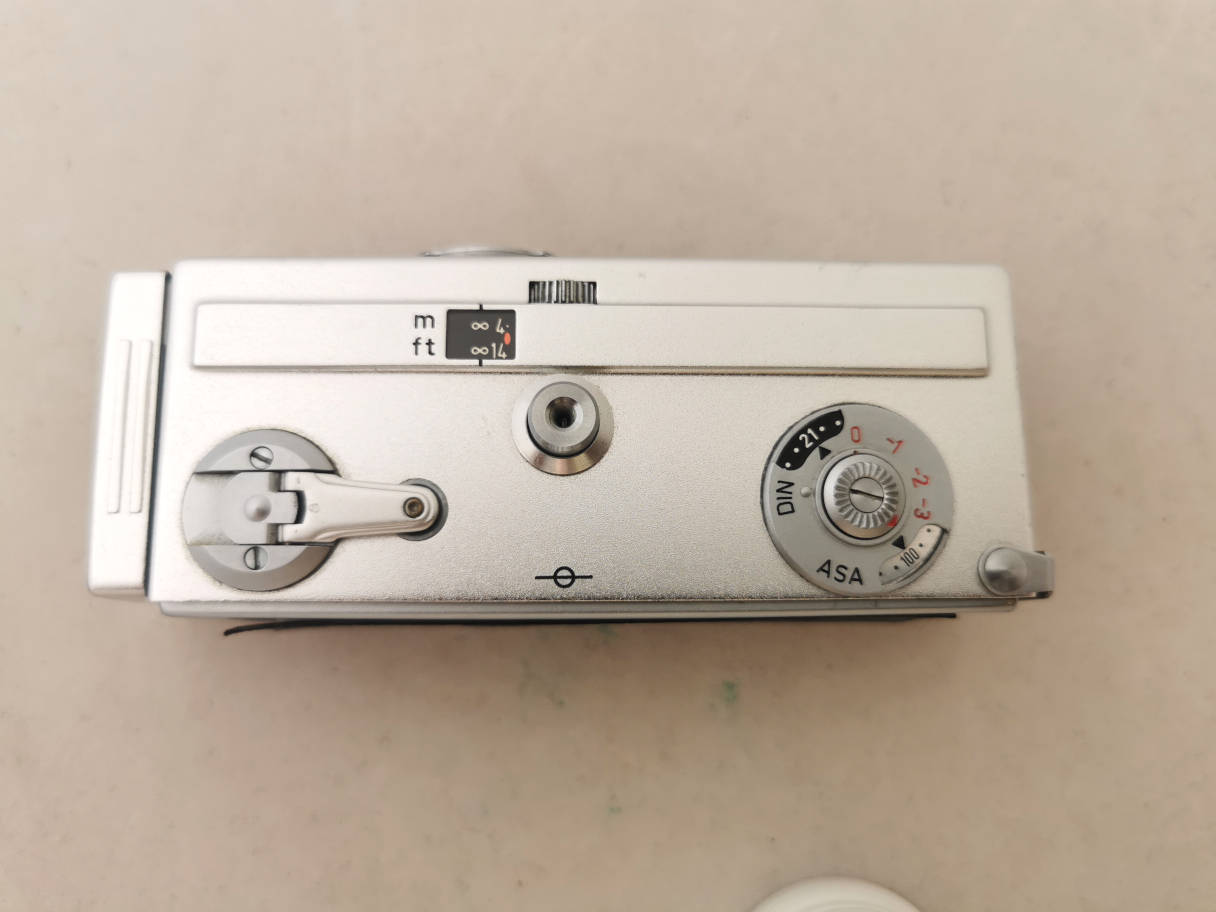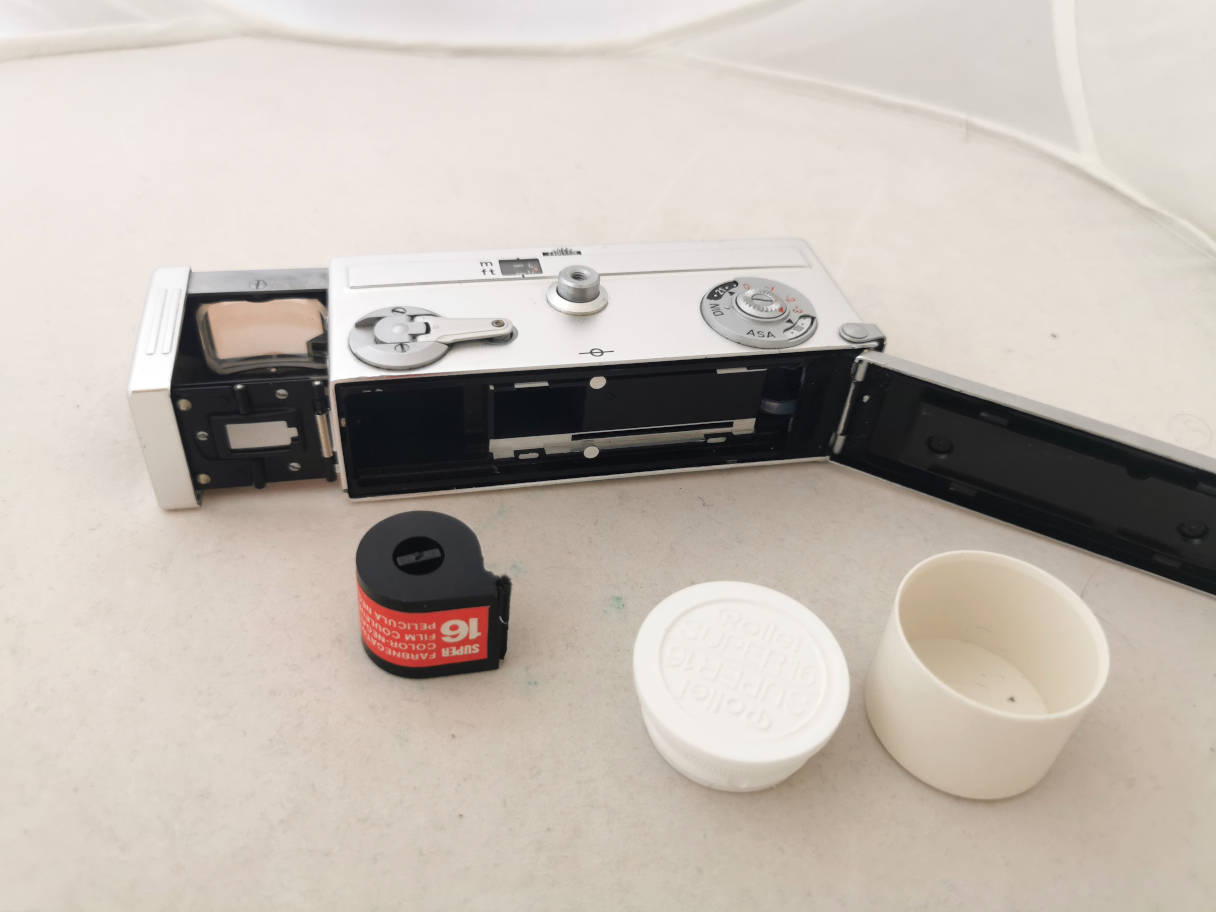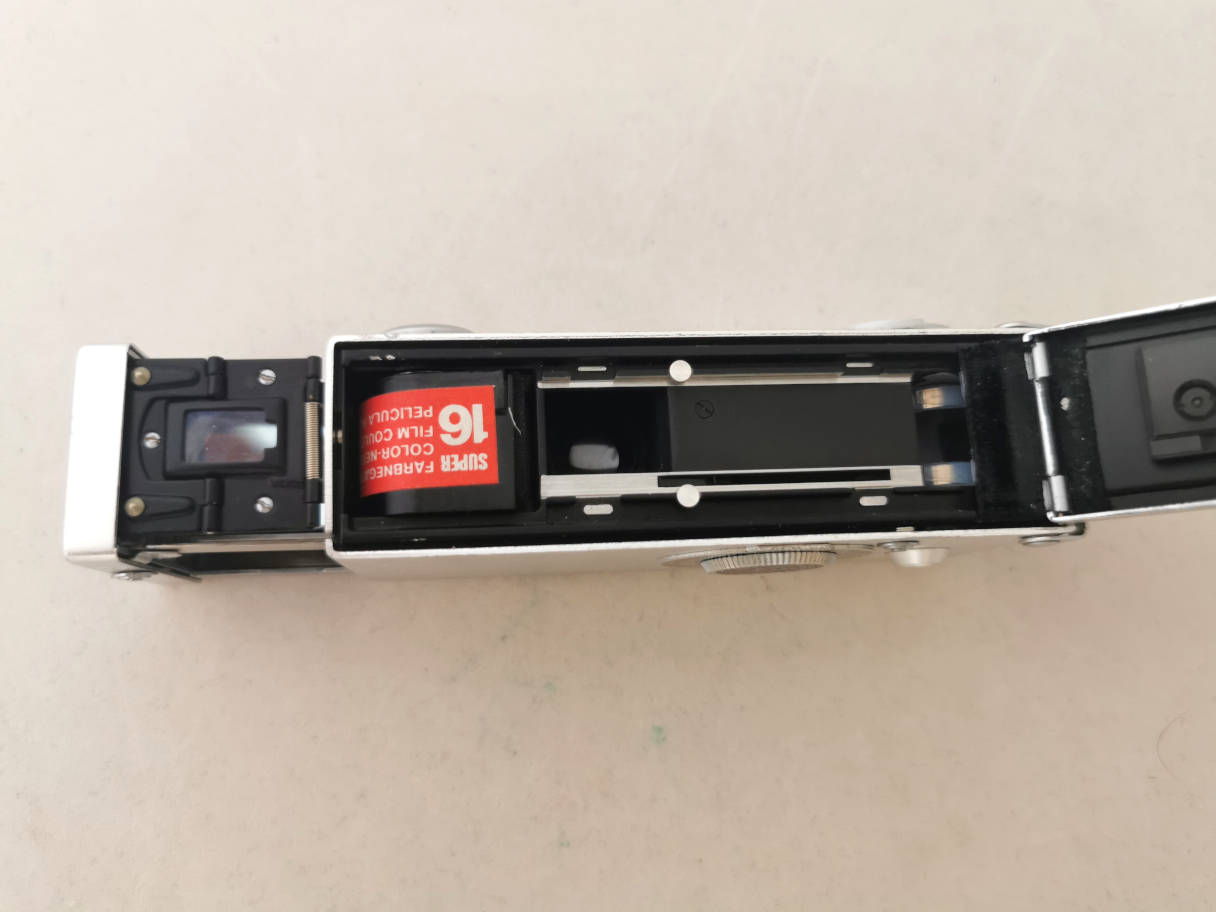
Camera closed, seen from above. Rewind, distance window and distance setting, shutter button with cable release socket and ISO setting + filter compensation up to 3 apertures.

Camera closed, seen from below. Film counter and aperture setting with tiny release button. Set to automatic in the picture. Manual aperture in B mode and flash (1/30s).

Seen from the back.










